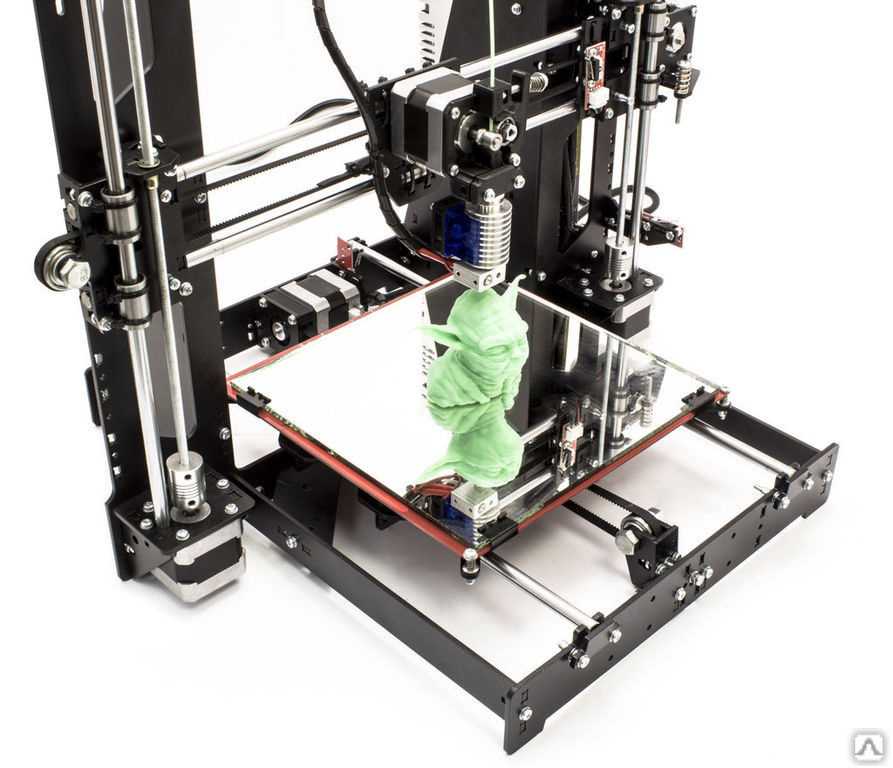3D printing money
How to make money with a 3d printer?
How profitable is 3D printing?
But first, let's answer this question. Can you really make money with a 3D printer?
The answer is yes and no. It depends on the niche that you serve. If you're 3D printing for the general consumer, then your profit margin might not be high because it's for personal use. Consumers love cheap stuff. You'll barely cover your cost because of the amount of labor required to finish just one job. But if you're serving clients where 3D printing solves a costly problem that they have, then they are more willing to pay you a lot more to solve it for them.
Here's what we mean by that.
Scenario A: Joe is looking to 3D print a door handle because his door handle broke.
Scenario B: Amanda is looking to 3D print a prototype of a product she plans to sell on Kickstarter.
Believe it or not, we get a lot of Joe's looking to get a quote for their missing appliance part. And most of them are surprised by how expensive 3D printing is and why can't it be as a cheap as Amazon!
We turn them away. Cheap clients are not worth your time.
Best entry level 3D Printer
Don't have a 3D printer already?
Phrozen Sonic Mini 4k 3D Printer
Check out this Phrozen Sonic Mini which is very popular among 3D printed miniatures enthusiasts.
$349.99 from Phrozen3D
Commisions earned
Different ways to make money with 3D printing
We've listed a couple of ways you can make money with a 3D printer. Some of these ideas are really good, some of them are bad. But we're listing them any way and it's up to you to make that decision if it's even worth considering.
Let's dive right in!
1. Sell pre-made 3D prints on Etsy
Etsy is one of the biggest marketplace for 3D printing. A lot of 3D printing hobbyists and even professional gravitate towards Etsy because of its large audience who are into handcrafted stuff.:quality(80)/images.vogel.de/vogelonline/bdb/1547100/1547124/original.jpg) Some of them have even made a name for themselves on Etsy, whether that's selling pre-made items with a little bit of customization or selling full on 3D printed objects.
Some of them have even made a name for themselves on Etsy, whether that's selling pre-made items with a little bit of customization or selling full on 3D printed objects.
When we were starting out back in 2016, we were the first ones to start selling 3D printed planters. Made boatloads of money but ultimately had to stop because of copyright issues. But also partly, because it wasn't where we imagined company .
Remember how we said cheap clients aren't worth your time. On Etsy, you will encounter a lot of cheap clients.
Pros
- Quick way to validate your 3D printing idea
- Benefit from Etsy's huge audience
- Running ads are cheaper compared to Google
List of 3D printed products that you can sell on Etsy:
D&D miniatures
Planters
Vase
Freezing Bernie
How do you choose which products to sell?
On Etsy, you will see a lot of people selling different variations of the same thing - planters, iphone holder, headphone holder, etc.
Why?
Because these things sell!
Like it or not, Etsy will be full of copycats and originality doesn't matter. If your product sells, people will copy it. (And vice versa)
How can you stand out on Etsy?
There's a lot you can do to stand out, but here are some of the common ones that we hear over and over again.
Offer something unique that differentiates your product. Whether that's offering higher quality 3D print (resin), custom finishing, etc.
Avoid competing for price. It becomes
Ask your happy clients to leave a review
Take high quality product photos
2. Offer a specialized 3D printing
This comes down to finding a niche that you're comfortable to work with or if there's enough margin for you to be profitable.
Here's a list of niches you can offer your 3D printing services to:
Tabletop Miniatures
Toy Designers
Jewelry Designers
Architecture firms
Engineering firms for prototyping services
Pros
- You can standardize your process
- Repeatable business
- Easier to master one industry than be a jack of all trades
- You can become a known expert in that industry
3.
 Start a 3D printing business in your local area
Start a 3D printing business in your local areaWe'll start off by saying that starting a 3D printing business is the most difficult thing to do out of all the other ideas on this list.
Pros
- Potential for high profits
- Local advantage over online only 3D printing companies
We were fortunate that we were located in NYC, where there is huge demand for 3D printing, and that we started in the early days when 3D printing was still new.
We're not saying this because we don't want you to compete with us, but we're saying this because we want you to know the risks involved in the 3D printing business. Many 3D printing companies have gone out of business because they could not make a sustainable profit to keep the lights on.
The amount of work that you have to put in on fulfilling custom orders is a lot. If you don't opt for an automated system, you end up doing a lot of back and forth with clients. And if you do opt in for these instant quoting systems, you can get a lot of low end jobs and lose out on clients with a very custom need.
The real money in offering a 3D printing service, especially if your a small business, is if you can differentiate yourself from merely becoming a commodity.
For us, we had to become more than just a 3D printing service. It sounds corny, but that was the reality. We had to offer other services that would add value to 3D printing. For example, a marketing agency came to us for 3D printed trophy in 24k gold. But we know that we can't 3D print gold. We can either tell them to take it to a metal plating shop or we can do it ourselves and charge on top of it.
We can charge a lot more because:
We're taking all the risk. If that metal plating fails, we have to 3D print again.
We're making their lives so much easier by being an expert at this field.
And if they're on a really tight deadline, we can charge even more because we're guaranteeing results.
Clients who care more about their time and results are willing to pay you a lot if you can deliver.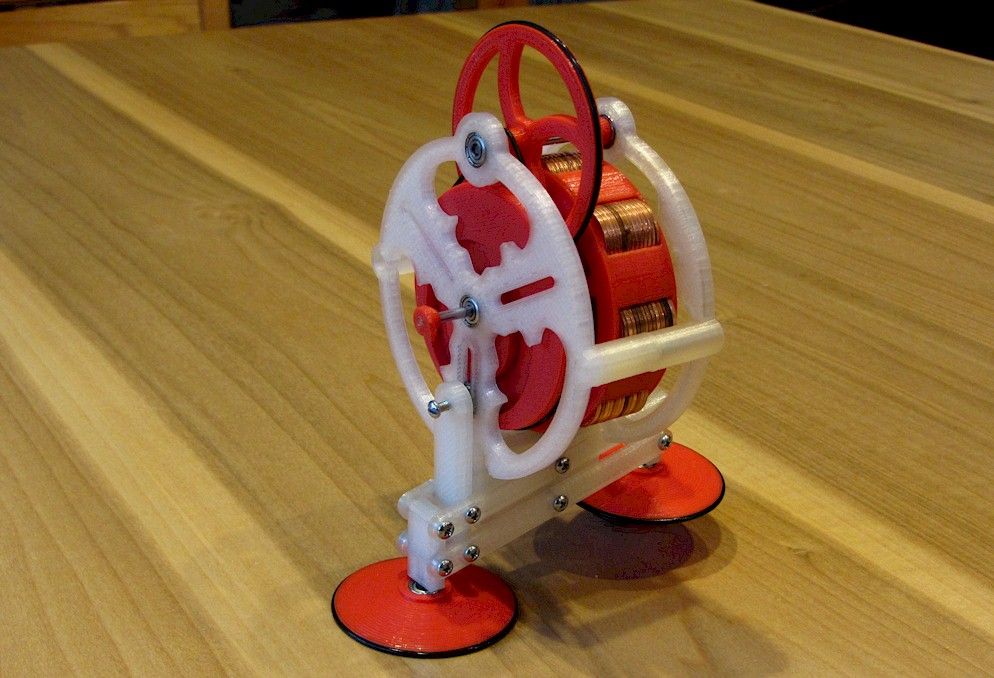
So we've partnered with a local metal plating company and later on started offering metal plating services for 3D printing.
Having capabilities more than 3D printing will allow you to charge more than just the 3D print by itself.
Whether that's painting, or creating molds. Whatever it is, you need to find the right clients.
Bonus: Offer 3D scanning services
3D scanning and printing services are perfect way to increase money you can make from owning 3D printer. Although this would require buying a 3D scanner, it's a good option to think about when increasing your chances of landing a 3D printing client.
4. Sell your 3D printing designs
Making money with 3D printing isn't only limited to running your 3D printer 24 hours a day. You can also make money from selling 3D models!
This might be hard if you don't have any design skills. You can either learn or hire a designer on Fiverr or Upwork.
Pros
- You can make money while you sleep
- More scaleable than running a 3D printing business
Patreon Business Model
Here's how it works. People pay you an X amount every month for you to publish 3D models for them.
People pay you an X amount every month for you to publish 3D models for them.
This business model is very popular among the tabletop miniature community.
The above picture is from LordOfThePrint's Patreon. They're one of the popular designers focused on building 3D designs for tabletop gaming. They currently have 1,933 subscribers as of this writing. Assuming only 5% of that is merchants, (about 100) that's $3,866 of monthly recurring revenue!
Take this WallStreetBets 3D model by ChaosCoreTech for example. We spent $50 to have the rights to sell their design for a month. Imagine having 10 Etsy sellers wanting to sell your 3D model. That's have $500 of passive income every month for a few hours of design work!
Merchants/Etsy sellers are great target to sell your 3D models to because:
They'll use it to make more money
They know that your 3D model would print properly because you also know how to 3D print. You might also include supports to make it easier for them
You can show them how it would like 3D printed, thus, making it even easier to sell.
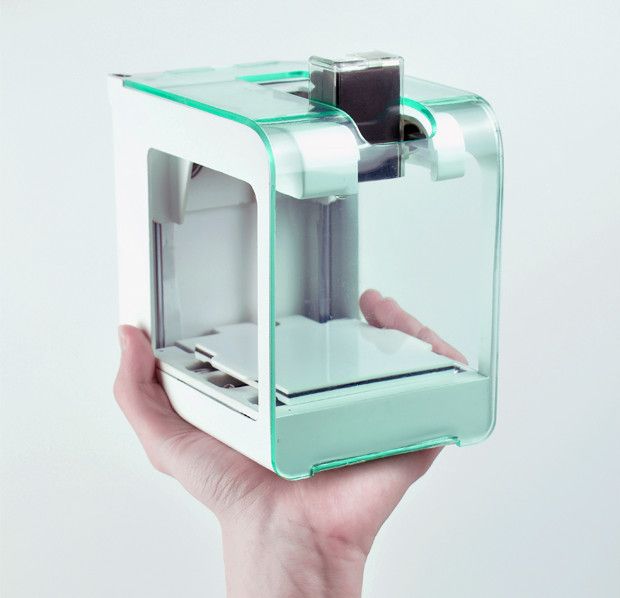
Marketplace Business Model
Some prefer to sell their designs as one-off product that people can just buy online without having to subscribe monthly.
Places where you can sell your 3D models
MyMiniFactory
CGTrader
TurboSquid
5. Start a YouTube Channel
We know that this is easier said than done. Creating content requires time, effort and consistency. With the amount of 3D printing related youtube channels out there, it might be hard to stand out.
But we're not here to stop you from starting your own channel. We're just here to tell you that you can make money with it.
Pros
- Potential for high earnings
- You can use your audience to make more money aside from YouTube Ads
6. Sell an online 3D printing course
If your confident enough with your 3D printing skills and you have knack for teaching others, then selling an online course about 3D printing can
What should you teach?
Again, you need to find a problem where people are willing to pay money for. If you search "3D printing" on Udemy, you'll find 3D printing courses that people are paying for.
If you search "3D printing" on Udemy, you'll find 3D printing courses that people are paying for.
It doesn't have to be "how to operate a 3D printer", it can be a course on "how to operate a profitable 3D printing business". With this strategy, you'll attract clients who are willing to pay money to make more money.
Pros
- Passive income
The following ideas are not so good
So you can probably skip to the end if you wish to.
7. Rent your 3D printer for events
With the pandemic and all, this is probably not a good idea. But it's still an idea right?
The business is very similar to a photo booth. A bar mitzvah will hire you for 3 hours to 3D print keychains for them.
But 3D printing takes a long time. They are going to complain that you didn't 3D print for everyone.
Yup, bad idea.
8. Sell your 3D printer
You can quickly make money if you sell the 3D printer you just bought.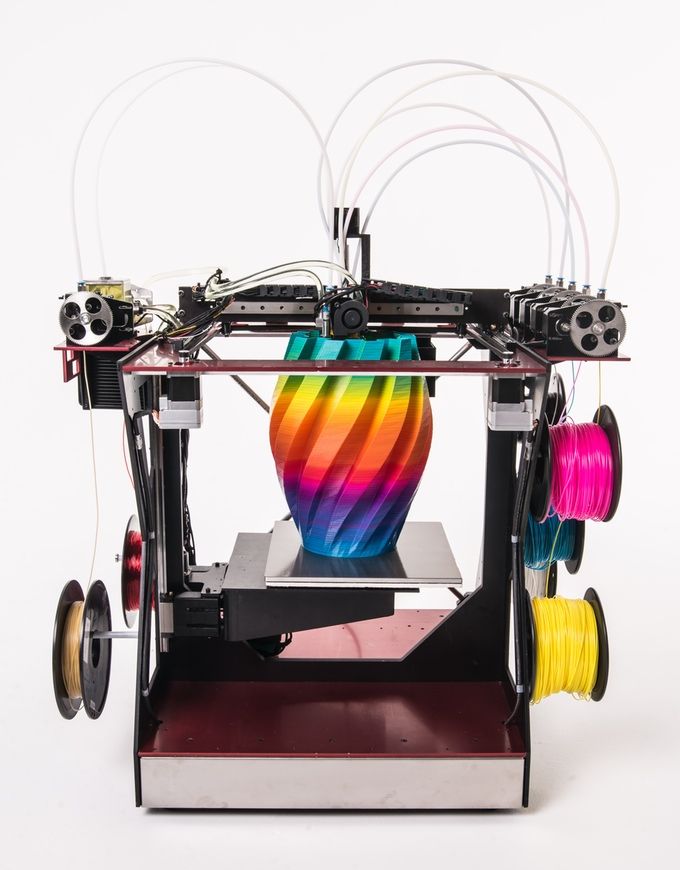 Guaranteed.
Guaranteed.
All jokes, aside
9. 3D print the word "money"
You will literally make "money" with a 3D printer with this strategy.
In summary
Yes, you can make money with a 3D printer. And there are a lot of ways that you can do it, whether that's selling 3D printed items, digital goods, or even offering a 3D printing service in your local area. Is it easy to make money 3D printing? It's not. You still need to work hard(and smart) to become successful in the 3D printing business.
11 Ways to Make Money 3D Printing in 2022 – Clever Creations
Our site is reader-supported. When you buy via the affiliate links on this site, we will receive a commission at no cost to you. All opinions remain our own. Learn more
Ever wondered about turning your 3D printing hobby into a profitable business venture? We’re here to tell you that there are several ways to make money with 3D printing even as a beginner.
In this guide, we’ll examine the best ways how to make money with a 3D printer, which 3D printing services are most in-demand right now, and what you need to know about running a 3D printing business before you get started.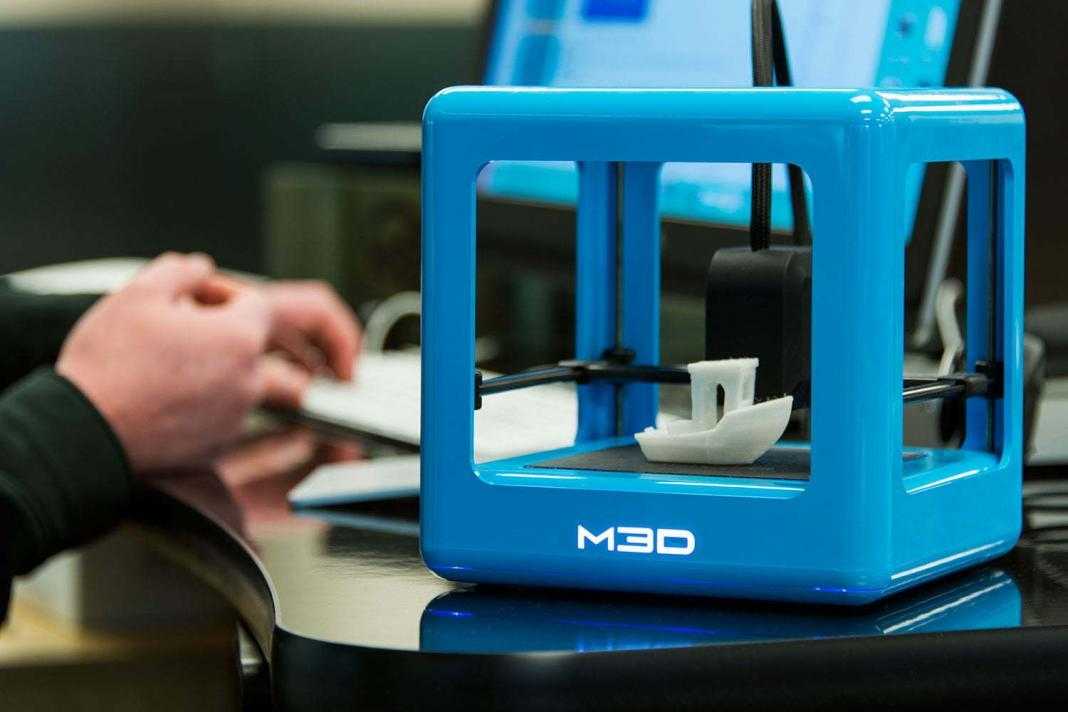
Best ways to make money with a 3D Printer in 2022
1. Design and sell 3D prints
If you want to design, print, and sell your own 3D printed items, there are a few different ways to do it. For example, you’ll need to decide if you want to stick with a set of specific designs or if you want to work on commission.
Personalized or custom items mean you have to make a new 3D model for every order. Offering only pre-designed items allows you to make items ahead of time and ship them out as needed.
There is a market for nearly every type of 3D print you can create, so choose the types of items you enjoy making. After you have decided that, figure out where the customers for those items like to shop so that you can offer your products there.
What can I make and sell with a 3D printer?
In terms of the things to 3D print and sell, your products can be anything from planters to phone cases to home décor items. Ideally, the products you sell line up with your own passions while still being in high demand from your target audience.
Some of the most popular things to make and sell are:
- (D&D) miniatures. 3D printed miniatures are very popular at the moment. Unlike store-bought miniatures, these can be fully customized to your customers’ liking. You can also paint the miniatures before shipping them out, but many customers don’t mind painting minis for themselves, or they leave them unpainted altogether. When doing this, we recommend you use a resin 3D printer for miniatures.
- Jewelry. 3D printed jewelry can be sold at a high mark-up and for more money than other items, but there is a lot of competition in this niche on sites like Etsy. For 3D printing jewelry, a resin 3D printer (or even a high resolution 4K+ resin 3D printer) is ideal.
Image: xfanta via MyMiniFactory
There is a lot of demand for 3D printed jewelry- Cosplay items. Creating and selling cosplay items can be a profitable endeavor. 3D printing helmets, 3D printing armor, or all kinds of other props are valid ways of making money with a 3D printer.
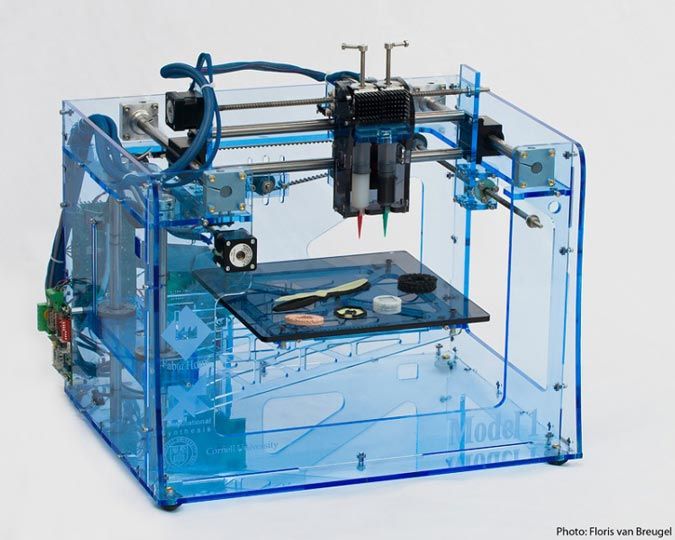
- Planters. Attractive self-watering planters aren’t always easy to find in retail stores. That is one of the reasons why they are popular things to 3D print.
- Toys. Toys are easy to make on FDM printers and barely need any post-processing.
These are just a few examples, but the list is practically endless. Think key chains, customized shoes, personalized crafts, or other one-off items. You can sell designs of others (if the copyright license allows), or create your own designs and your own products.
Where to sell 3D prints?
There are many platforms you can use to sell your 3D printed items and make money with a 3D printer, both online and offline. Most sellers choose a few different platforms for selling to reach a variety of markets and audiences, as well as to bring in more money.
While it’s important to not limit yourself to one sales channel, you should also be careful not to spread yourself too thin.
Offline
You have several choices for selling your 3D printed items in person. Events like craft fairs, trade shows, garage sales, and festivals can all give you the opportunity to show off your 3D prints and gain customers. If you have access to electricity at the event, setting up your printer in your booth can be an easy way to attract people to your table.
Events like craft fairs, trade shows, garage sales, and festivals can all give you the opportunity to show off your 3D prints and gain customers. If you have access to electricity at the event, setting up your printer in your booth can be an easy way to attract people to your table.
You can also put your 3D printed items into consignment shops or set up a display in local businesses. This gives your 3D printing business local exposure without committing to a storefront.
Online
To reach a large and varied global market with your 3D printed items, you should sell online. You should ideally have your own online store at some point. In the meantime, there are several eCommerce platforms that can help you get started:
- Etsy
- eBay
- Amazon
- Fiverr
2. Start a local 3D printing business
Starting a local 3D printing business is one of the quickest ways to get customers and generate sales. You can manufacture custom parts, tools, and necessities for other local businesses. This is especially true if you live around several factories or plants. You can reach out to your local bakery about cookie cutters, or make trophies or awards for events.
This is especially true if you live around several factories or plants. You can reach out to your local bakery about cookie cutters, or make trophies or awards for events.
Recommended:
The 5 Best 3D Printers for Making Cookie Cutters
The list goes on. You will be surprised by how much you can contribute to your local community once you just start asking. If you are wondering how to make money with a 3D printer, this option offers you lots of potential.
While opening your own business sounds complicated, it’s a rather straightforward process. You should contact your local authorities or city council to double-check the ordinances. You may find that you won’t need any permits or zoning updates to run it from your house. That depends on where you live and how your local laws are set up.
What do you need to start a 3D printing business?
3D printer
It goes without saying that if you want to start your own 3D printing business, you need a 3D printer. In this case, it should be a reliable 3D printer that you are already familiar with and have a stock of spare parts for.
In this case, it should be a reliable 3D printer that you are already familiar with and have a stock of spare parts for.
You don’t want to start taking requests from customers and have to cancel their orders a week later. Things like this happen when you’re waiting on a replacement part or because something basic went wrong and you don’t know how to fix it. Be prepared with basic troubleshooting knowledge of your machine and backup components before you start.
You don’t need a top-of-the-line printer to offer your 3D printing services. However, you should aim to have a properly working and time-efficient one. Every minute that you spend re-leveling your build plate because your printer falls out of alignment is a minute that you have to account for through higher printing fees or lost maintenance costs.
Going with a 3D printer under $1000, like the reliable Prusa i3 MK3S, is a good way to save yourself time.
On the other hand, if you decide to go with a budget 3D printer, like the Ender 3 V2, you can make use of the many Ender 3 upgrades that turn it into a more time-efficient machine. One example of this is the BLtouch leveling sensor, which removes the need for manually leveling the build plate.
Business website
You need a website to inform your potential customers about your 3D printing business and to capture leads. You should have this set up by a professional web designer if possible. This will be your main touchpoint for customers to interact with your brand. As such, you want it to look good and reputable to bring in those early clients.
You should also contract a graphic designer. They will make your logo, company palette, and other branding materials. Your web designer will need them to keep your website design on-brand.
Some web designers can do both (and vice versa). Just be sure that they have a strong foundation in branding if you choose to use one person for everything.
You can go as basic or complex as you would like with your final website design. It depends on what types of services you plan to offer and how much of the pre-purchase and buying phase you want to happen online.
Premium add-ons like an online store, quote generator, appointment scheduling app, and other tools add value to your end customer. They will cost you more money in upfront design charges since they may require adding a web developer to your project as well.
3. Design and build prototypes
Using your 3D printer to design and build your own (or someone else’s) product prototypes is a great way to monetize your machine. For other people’s prototypes, you can charge them for designing and building them. For your own prototype, you can send it into production and have your own product line thanks to your 3D printer.
4. Rent out your 3D printer
Many people love the idea of 3D printing but don’t have the time, space, or money to buy their own printer. Or sometimes they just need the occasional niche print and don’t think it’s worth it to buy their own machine.
That’s where you and your 3D printer rental services come in! You can charge customers a fee for a printing service where you print their models on your printer. Doing this during your 3D printer’s usual downtime lets you make money 3D printing in moments where you don’t need to use the machine for yourself.
Doing this during your 3D printer’s usual downtime lets you make money 3D printing in moments where you don’t need to use the machine for yourself.
This seems like one of the easier options on this list to try. However, print on demand does have some complicated elements to consider. You have to be properly compensated for all time and materials involved.
That includes the cost of your time spent leveling and maintaining the printer (as well as the cost of wear and tear on your machine from additional usage). Keeping in mind the 3D printer’s electricity usage and other 3D printer costs is important too.
For your 3D printing service, you also need to consider if you will honor requests for certain colors of filament, what types of filament potential customers can order, and if you will also include services for post-processing for a fee.
Image: Mtar Einbern via MyMiniFactory
Post-processing can also include painting5. Sell digital 3D models
If you’re a skilled modeler, sculptor, or drafter, you can forgo the necessity for physical products and sell your 3D model files online. This option is more of a passive income business model that can work beside or be independent of a physical product line.
This option is more of a passive income business model that can work beside or be independent of a physical product line.
Selling digital files like 3D models lets you make money on one product several times without having to make the item more than once. It becomes even more efficient if the digital files you sell are existing assets from another project that weren’t used anymore and would otherwise have no value.
While you won’t be making money in large sums per sale for 3D models, they can still earn a higher lifetime revenue than a print and sell option of the same model. Digital files simply sell with more regularity than physical objects and have no production cost associated with each extra copy sold.
Where to sell 3D model files
The first place you should consider selling your 3D models is on your own website. If you already have one of those for your local 3D printing business, excellent. If not, start looking for a web designer ASAP.
Third-party platforms charge fees to use their services. Having your own eCommerce site ensures that you get a larger percentage of profit from each sale and increase the money you make 3D printing. The downside to this is that you have to build your audience and website traffic yourself. Most third-party eCommerce platforms bring their audience to you.
Having your own eCommerce site ensures that you get a larger percentage of profit from each sale and increase the money you make 3D printing. The downside to this is that you have to build your audience and website traffic yourself. Most third-party eCommerce platforms bring their audience to you.
Some of the best places to sell your 3D models are:
- Etsy
- MyMiniFactory
- CGTrader
- Cults3D
Image: DarkFigurines via MyMiniFactory
3D models are loaded into a slicer program to generate instructions for the 3D printer6. Start a YouTube channel
You can use your 3D printing knowledge to set up your own YouTube channel. Build your audience by posting cool and helpful 3D printing YouTube videos to your channel.
It is possible for you to earn revenue from ads, donations, affiliate programs, and brand sponsorships. If you get a large enough following, companies might also send you free products to review.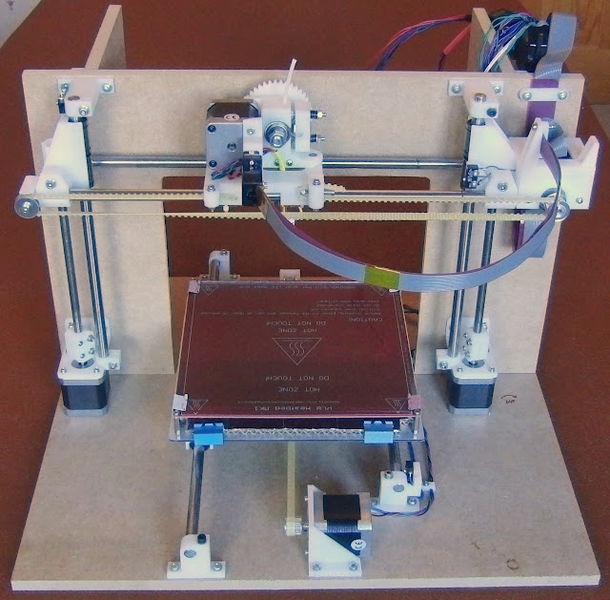
You most likely won’t make a full-time living from YouTube (especially at first). However, if you grow it as one of several monetization strategies, it can be helpful. It’s a great way to push potential customers to your website or online shop. It can also help develop your name as a knowledgeable person in the industry.
7. Start a blog
You can use a blog to write 3D printer-related content and share your knowledge with others. Like YouTube, you can monetize the content on your blog through ads, affiliate programs, and paid sponsorships. Having a blog gives you more control over the creative process. You also make a lot more from ads on your website than YouTube pre-roll ads.
You can also use your blog as a way to bring readers to your website where you sell your prints, 3D model files, and other products. Your blog content acts as a verification that you know what you’re talking about on the subject of 3D printing.
It shows that you can be looked at as a trusted source.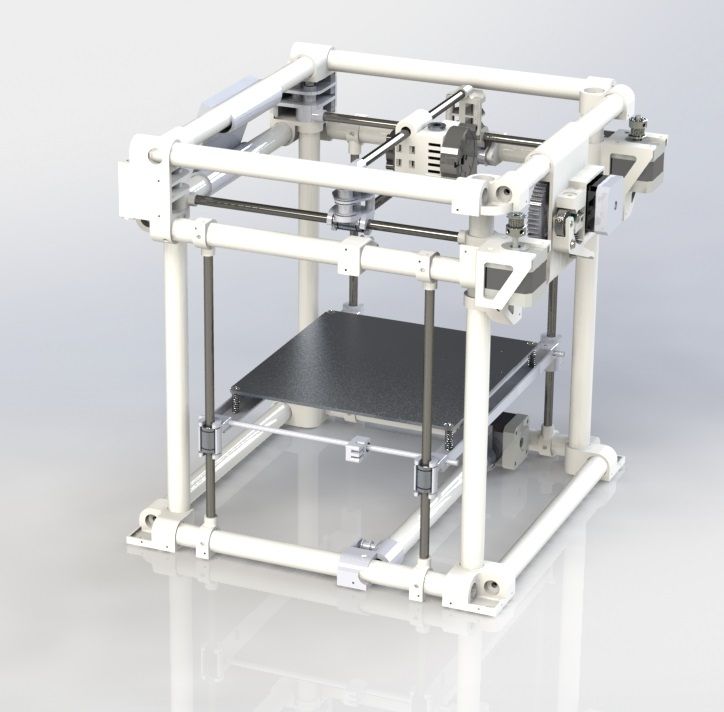 This is called brand authority, and it makes it much easier to convert an audience member into a customer when they already trust what you’re saying.
This is called brand authority, and it makes it much easier to convert an audience member into a customer when they already trust what you’re saying.
8. Repair things in your household
A 3D printer is a great tool to have around when something in your house breaks. With basic computer-aided design (CAD) knowledge and (free) 3D modeling software, you can design replacement parts for broken appliances, furniture, and so on.
Normally when something breaks, you have to order a new part from the manufacturer. You potentially have to replace the entire thing if the manufacturer can’t help you. By doing basic repairs, 3D printing your own replacement parts, and keeping your old belongings in functional shape, a 3D printer helps you save money over time.
9. Repair 3D printers for others
There is no denying that 3D printers can be a bit temperamental sometimes. They have a large number of parts to make them operate the way they should. If someone is new to 3D printing or never learned what most of those components are meant to do, they will struggle to fix it when something goes wrong.
Put your technical 3D printer knowledge to good use and offer to fix broken printers for a fee. Most people will be happy to spend money to let someone more capable deal with it. You get paid work from a person who was likely never going to use your 3D printing services or buy your products.
10. Flip broken 3D printers
If a 3D printer is broken badly enough that the owner doesn’t want to fix it, you can still salvage it by fixing it up. After you have repaired it, you can then resell it for a profit. You can also keep it for spare parts for another 3D printer and sell that one afterward.
11. Offer 3D printing courses
If you’ve been 3D printing for a while, you probably know quite a bit about the subject. Consider using that knowledge to create an online course or series of online courses that teach new 3D printing enthusiasts the basics.
It will be a big initial investment of your time to plan the course, film it, edit it, compile it, and market it. However, you can continue to sell the course for years to come while doing little to no maintenance work on it.
However, you can continue to sell the course for years to come while doing little to no maintenance work on it.
You can host the course through an online learning platform like:
- Skillshare
- Udemy
- Domestika
- Teachable
You can also host it through your website if you have one (and use your blog to help market it.)
Frequently asked questions
Can you make money with 3D printing?
Yes, there are many ways you can start making money with a 3D printer. Selling 3D prints (like phone cases) or offering 3D printing services are some of the most popular methods, but there are many more you can choose from.
Is it legal to sell 3D prints?
As long as you follow the copyright license on any 3D model you use, you are legally allowed to sell 3D prints of the model. For any models you design yourself, you are the license holder, so you can use the models freely.
If any of the models depict copyrighted or trademarked content, that overrules the designer’s license. For example, if someone designed a 3D model of a well-known cartoon character, they still cannot sell prints of it because the character is not their intellectual property.
Image: edoyola via MyMiniFactory
Always check whether the objects you 3D print are copyrighted or notIs 3D printing a good side hustle?
Yes, 3D printing is a great side hustle if you already know a lot about the subject. If you are brand new to 3D printing and are trying to jump into starting a business with it from day one, it might be a frustrating experience.
Taking some time to learn your 3D printer, understand the settings, and be able to troubleshoot the most common issues are going to be very helpful in the long run. It will also ensure that you don’t guarantee your 3D printing service to someone before you are able to render it.
3D printing is also not much different than beginning any other side business. Starting a 3D print store or print-on-demand service requires niche market research, marketing, social media skills, and some understanding of business management. Those are all skills anyone can and should learn to increase how much money they make with their side business.
Starting a 3D print store or print-on-demand service requires niche market research, marketing, social media skills, and some understanding of business management. Those are all skills anyone can and should learn to increase how much money they make with their side business.
How long does it take to start making money with a 3D printer?
That depends on a few different factors. If you are trying a few of our suggestions on how to make money with a 3D printer, your chances of quickly connecting with new customers are higher than if you only stick to one method or sales platform.
How quickly people buy from or contract you also depends on having things like:
- A professional-looking website
- Clean and effective copy on your website and product listings
- High-quality pictures of your products
- Well-defined policies for shipping, returns, customization, etc.
- Good pricing (that doesn’t mean fighting to be the lowest)
- Accurate market research and a good strategy for your business
Not all of these factors have to be a slam-dunk every time. Online shops with terrible pictures make sales every day, while some with professional product photography do not. People stumble onto products by accident every day, even if their marketing strategy is abysmal. These are just some things that may color your timeline for profitability.
Online shops with terrible pictures make sales every day, while some with professional product photography do not. People stumble onto products by accident every day, even if their marketing strategy is abysmal. These are just some things that may color your timeline for profitability.
How long does it take to learn 3D printing?
If you have a plug-and-play 3D printer that is designed to set up and start 3D printing almost instantly (note that these are usually the more expensive machines on the market), you can start getting serviceable prints within a day.
Cheaper and more hands-on 3D printer models have a steeper learning curve and take more time to become adept with. Many of the tasks that plug-and-play printers do automatically are manual on budget printers. It will likely take you a few days to start producing quality parts. It will take a few months to have a firm understanding of all the 3D printer’s elements.
As far as being able to make your own 3D models, those skills are considerably more time-consuming to learn.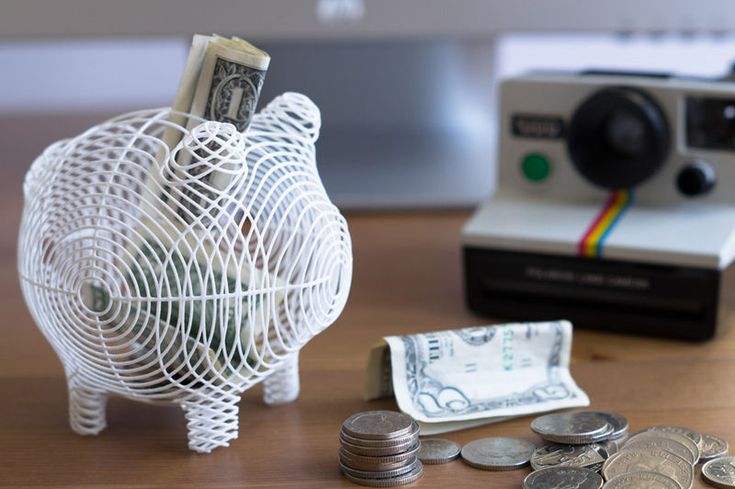 You can make very basic models within a day or so by following tutorials. However, it can take months or even years to become a skilled designer who creates original and aesthetically pleasing 3D models.
You can make very basic models within a day or so by following tutorials. However, it can take months or even years to become a skilled designer who creates original and aesthetically pleasing 3D models.
Do you need a license to 3D print?
Anyone with access to a 3D printer can print 3D models for non-commercial uses. However, the rules are slightly different when you intend to sell the finished product. Any models used need to have a commercial use license.
That means only choosing ready-made models online that have the proper license. You can also contact the designer to inquire about obtaining commercial rights. Many designers are willing to charge you a licensing fee in those situations, but some will still refuse. It’s important to be respectful either way.
What software do I need?
To start 3D printing, you need a 3D modeling program and a slicer program. The 3D modeling software lets you create 3D models to print, while your slicer turns your models into lines of code that your 3D printer can read.
For help picking out a 3D modeling program, we have an in-depth comparison between the best free modeling software options.
Is 3D printing expensive?
The expenses of 3D printing depend on several factors. These include what type of material you use, what type of 3D printer you have, if you keep your printer well-maintained, and how you store your materials.
Paying attention during 3D model slicing and set up can cut down costly or wasteful mistakes. Keeping your 3D printer clean and lubricated extends the life of its parts. Storing your filaments or 3D printer resins away from moisture and light will extend its working life and help you save money.
Conclusion
There are several options to make money 3D printing, which means there is something suitable for everyone. Do you make money with a 3D printer? What do you find most challenging about running a 3D printing business or side hustle? Let us know in the comments!
Scroll to Top
buyers, be careful in the world of non-free 3D models / Sudo Null IT News But what about paid models? Putting a model somewhere and placing a "buy" button next to it is no longer a problem, but after spending some time buying and printing various non-free 3D models, I began to see some obvious shortcomings of this system.

The specific problems and solutions depend on how these models are marketed, but one thing is clear: Poorly designed 3D models are bad for both consumers and the future pay-per-download market.
Various ways to sell models
There are many ways to sell models online. Online stores are great for digital models because they are not physical goods, and serving a thousand customers is no different than serving ten. Technically, the user pays for a license to use the model, and its conditions vary significantly depending on the creators and intermediaries.
Direct sales with payment per model
Direct selling is similar to downloading 3D models, only before you receive the link, you will see the price of the link. Sites like Cults3D and MyMiniFactory allow creators to set their own prices for non-free models. It is quite difficult to estimate the number of their sales, but the number of downloads for popular models is measured in hundreds or thousands.
Standing apart is the successful Hero Forge project, which allows users to create their own miniatures for board games using a web interface. Users can pay to download the STL file for the model they have created, or buy a printed version. Hero Forge is proprietary, but very successful, judging by their recent Kickstarter campaign.
Indirect sales with payment for access to models
Indirect sales mean that customers pay for access rather than buying models one by one. Successful creators make models in niche areas, and people pay to access their creator's library of work.
The usual way to manage monthly subscribers and provide access to files for 3D modelers is through Patreon. One common niche is board games, and some of the most successful creators have thousands of followers.
Another way of indirect sales is crowdfunding. Money is collected to create a certain set of models, and sponsors get access to the resulting files. Again, there are a lot of miniatures of heroes and territories for desktops.
Again, there are a lot of miniatures of heroes and territories for desktops.
Self-printing kits
With this approach, 3D models are sold as part of a larger product. The buyer purchases the kit and prints plastic components for it himself, while the kit may contain electronic components and other parts. The result is a set that can include fewer items, is easier to produce, cheaper to ship, and usually costs less than if the seller had to do everything themselves.
Bulwark Blaster (NERF compliant) and OpenScan (open source 3D scanner) are examples of this business model. In both cases, the designs are based on 3D printed components and specific parts lists. The purchaser usually acquires a license to use one copy of the product.
And what's the problem?
In an ideal world, 3D printers reliably print parts of any shape without problems with overhangs, bridges, distortions or supports. You can buy a 3D model and get exactly what you expected. Unfortunately, we have not yet reached this point.
You can buy a 3D model and get exactly what you expected. Unfortunately, we have not yet reached this point.
Quality 3D models need to be developed specifically for 3D printing, especially when it comes to money - because under the current system, all the risks fall on the buyers.
No test drives, no fitting rooms, no refunds
The world of non-free 3D models is like a clothing store without fitting rooms, or a car dealership without a test drive. “No money back” is a common phrase in sales and services, but when combined with the inability to try the product before buying, the result can be disappointing if the quality of the model turns out to be poor.
Low technology models
3D printers, like any tool, are good in some situations, not bad in others, and terrible in others. This means that models intended for 3D printing need to be designed taking into account the strengths and weaknesses of 3D printers.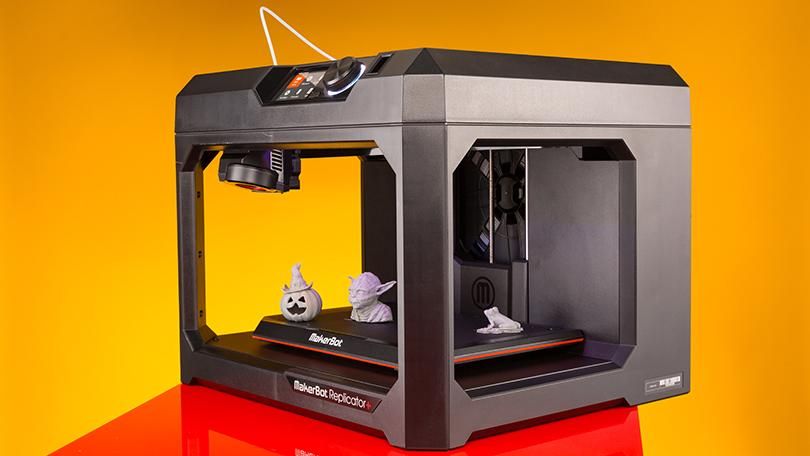 About the model developed in this way, we can say that it is made with high manufacturability.
About the model developed in this way, we can say that it is made with high manufacturability.
If the model was not designed with 3D printing in mind, it could create problems for the person trying to print it. The problem is that it is not always possible to identify models with which problems will arise, only by their image. Here are two examples.
For this model, supports and post-processing will be required regardless of the print orientation. The problem here is subtle: it was designed in such a way that it is almost impossible to print without props, regardless of the print orientation. She has other problems, but more on that later.
Let's add props - and we will face the need for post-processing and poor surface in the places where they were attached. If you place them on the visible side, the detail will be ugly. If it is invisible (where the loop is), they will hardly fit there.
These problems are solved in post-processing, but the point is not that - but that it would be better to avoid these problems while developing the part.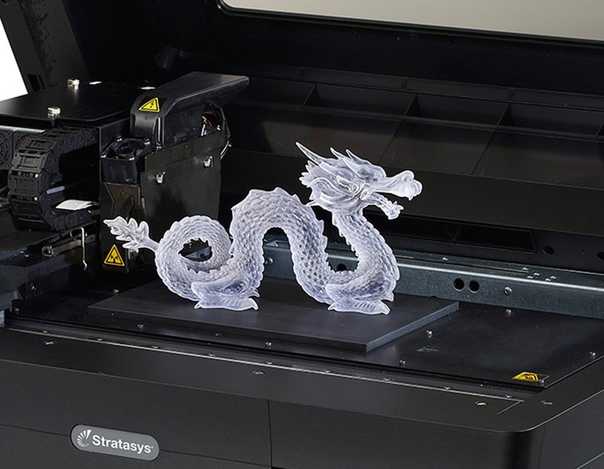
Cut in half, colors added to contrast inner and outer layers. The model is not complete. The problem arises where there are gaps between the outer and inner layers.
Second example. This model was advertised as being compatible with SLA (Laser Stereolithography). FDM and SLA printers have very different benefits, so it was interesting to see a model specifically designed for SLA.
But disappointment awaited me. The model was not solid. There are gaps between the outer layer of the model (the clothes of the figure) and the inner layer (the body), since these layers were modeled separately - and they left it that way.
Uncured material accumulates in these gaps, and the surrounding parts of the model are very thin, which directly attracts imperfections in printing. Such a scheme of the model ensures that, most likely, its outer layers, those that are visible from the outside, will suffer during printing. And these problems were not visible until the model was paid for.
Issues like this and more show poor manufacturability that you can't see in screenshots and renders, and as I noted earlier, pay-per-download is now territory of no refunds and dangers for buyers.
Why poor quality models are a big problem
The problem with bad models is this: by the time it turns out that the model has a problem (or it cannot be made properly, or it is too wasteful to print), it turns out that the buyer has already invested much more in it than just the purchase price. A bad model only repels a person who wants to hit the "Buy" button.
Passing all the risk on the buyer, so that all his money and efforts go to waste - this should be the last thing on any platform seeking to grow.
Ways to improve the situation
It's tempting to try to solve this money-back problem with a file access control system, but then it becomes suspiciously DRM-like, and that's not likely to be a good way forward.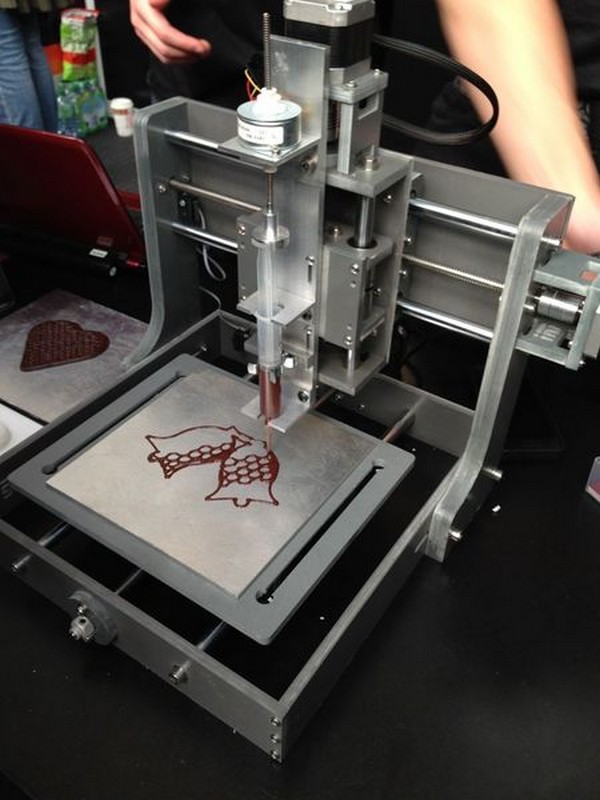
On the other hand, it is possible to increase confidence in the quality of models and purchases without changing too much in current platforms. Here's what you can do.
Demonstrate the quality of models with photographs and documentation
Documentation and a photo of the printed results, rather than just rendering models on a computer, is an effective way to provide the buyer with additional information about the model. The documentation does not have to be extensive, but it should list design elements, assemblies, or areas that require special control. An example is a printable vise model by Christoph Leimer. This is a free model, but its excellent documentation inspires confidence in its quality.
Models that require additional components must clearly list them in the description, along with specifications and sources. The latch model I used as an example of poor manufacturability requires some sort of arcane spring, with no dimensions or where to find it.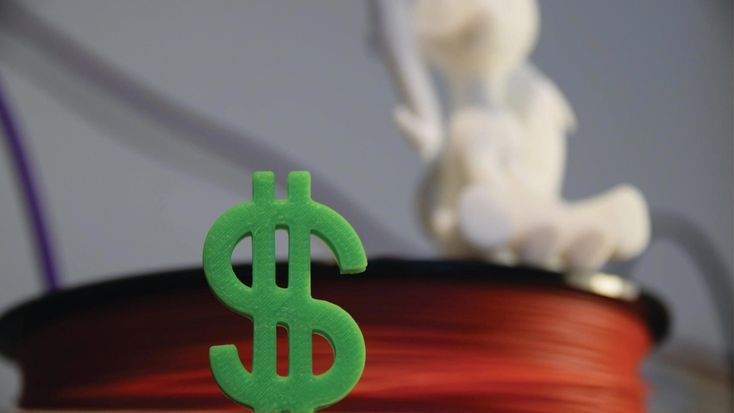 This is another problem that comes to light too late.
This is another problem that comes to light too late.
If the developer has not clearly and clearly demonstrated that he successfully printed his own development, do not buy it.
Provide test drive parts
Designers of kits and other prefabricated structures can give free access to some components, as if to say, "if you can print and assemble these models, then you will succeed, because the principles for developing my product were the same." If customers cannot return purchases, then this approach will at least give them a semblance of a test drive.
Run automatic quality check on models
Professional print studios like 3D Hubs analyze uploaded items as part of the approval process and warn of features such as thin walls, small parts that can get lost, and potential issues with prop removal. Model hosting and selling services could improve customer confidence by doing similar checks on the models they sell, and displaying the results of that analysis along with the model and price.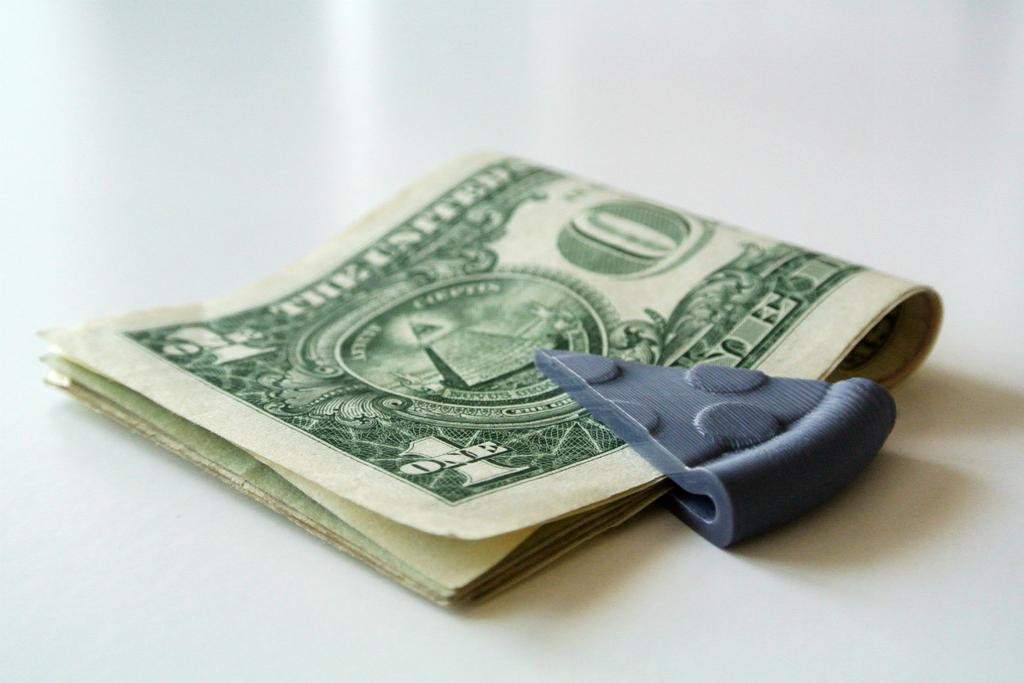
What was your experience with paid models?
Have you bought models online, or do you sell your own? What was your experience and what would you change about this system?
How to make money with 3D printing?・Cults
3D printing has completely changed the world of design. The discovery of 3D printers offers innovative entrepreneurs new ways to make money with their creativity. You can print a lot of commercial objects that have a high market value. Owning 3D printers is a real help for those who want to make money online. Learn how to make money with 3D printing in this guide.
This is one of the fastest ways to start a business. Designing models for 3D printing is a rather complicated technology even for owners of 3D printers. They are willing to pay for professionally designed 3D printing files to create their model. 3D model designers have the opportunity to earn money by selling their creations online.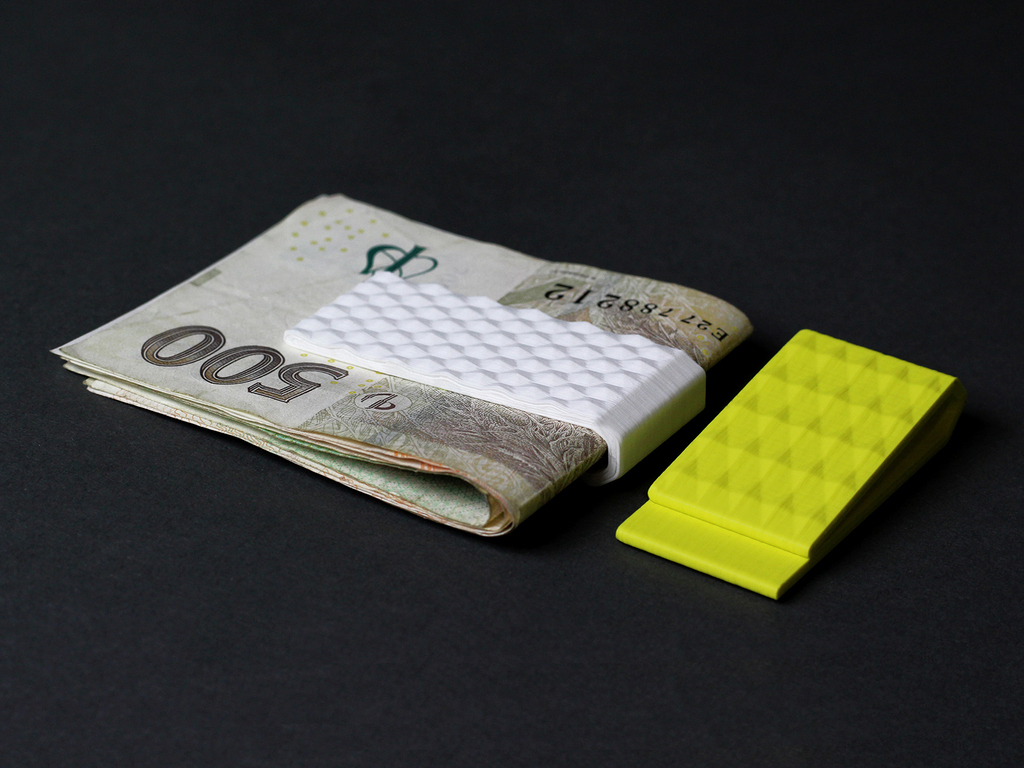 Aside from being a hobby, 3D printed models can become a livelihood.
Aside from being a hobby, 3D printed models can become a livelihood.
There are many sites where you can sell 3D printable models to hobbyists and printer owners. The Cults site, for example, is home to a strong community of 3D printer owners. This makes it easier for 3D print modellers to find buyers for their creations. This very active community is constantly looking for great OBJ or STL 3D models. Therefore, you can earn money from your 3D models by creating an account on our website. You then upload 3D print files to attract potential buyers.
On Cults, the designer earns about 80% of the selling price of his projects. Our site takes a commission of 20% of the sale price of the print to cover technical management costs. You set the selling price of your creations yourself, so you can easily make money with your 3D printer. When selling files for 3D printing, choosing the path through Cults3D , you will earn money, and this is from the first sale.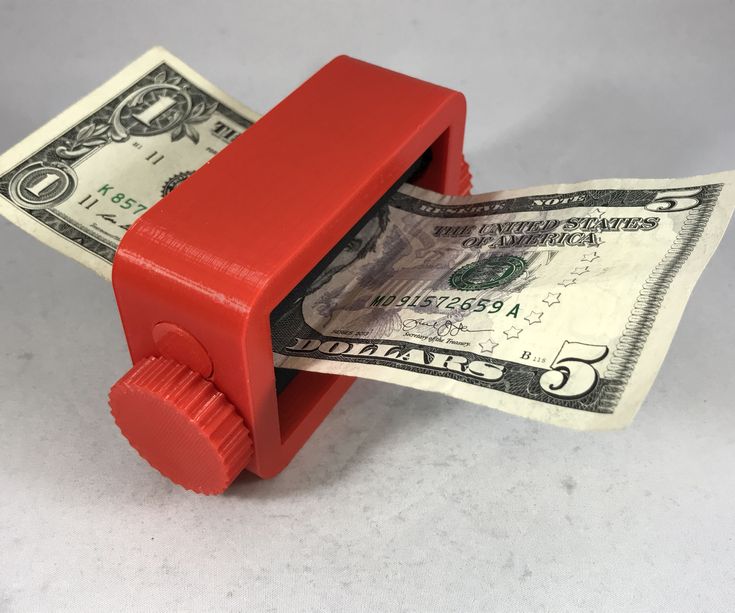
Today there are many buyers on the Internet who want to purchase 3D printed objects. You have the opportunity to make money quickly by creating 3D parts that are sold to various clients. Earn money by showing off your creations. You can also create a website to showcase your details.
Small businesses that want to generate leads often choose Shopify. To make money with a 3D printer , you also have the option to receive direct orders from customers. They will tell you what objects they need and you will take care of the 3D printing. Use your creativity and offer your services to the market in your area.
For example, you can start selling a series of 3D printed vases with different designs and colors. If you take care to respect the license to distribute your works, you will be able to open your online business and earn rewards for your creations. However, you must ensure that you are registered as a self-employed person with the local tax authorities.
This is a great way to make money doing 3D printing. Today it is a very popular service. Professionals in the field of construction, architecture and engineering sometimes urgently need the services of prototyping . You can create prototypes for various clients with a 3D printer. The contractor will then use the prototype for series production.
Rapid prototyping services are very popular among professionals due to their many benefits. Prototypes created using 3D printing reduce the possibility of errors in the design process. Plus, printing costs less and offers more options. This means that you can easily make money with your 3D printer.
The 3D printer is also used by automotive designers to prototype car parts. Prototypes, made on the 3D printer, will be used to test various features on new models.
Mastering a 3D printer can be a great way to make money. You can use your tech and 3D printing skills to teach classes to people who want to learn.







